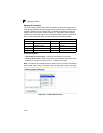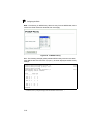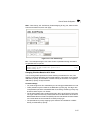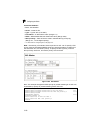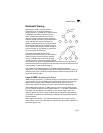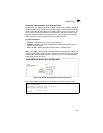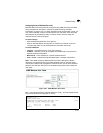
Multicast Filtering
3-139
3
Multicast Filtering
Multicasting is used to support real-time
applications such as videoconferencing or
streaming audio. A multicast server does not have
to establish a separate connection with each
client. It merely broadcasts its service to the
network, and any hosts that want to receive the
multicast register with their local multicast switch/
router. Although this approach reduces the
network overhead required by a multicast server,
the broadcast traffic must be carefully pruned at
every multicast switch/router it passes through to
ensure that traffic is only passed on to the hosts
which subscribed to this service.
This switch uses IGMP (Internet Group
Management Protocol) to query for any attached
hosts that want to receive a specific multicast
service. It identifies the ports containing hosts
requesting to join the service and sends data out
to those ports only. It then propagates the service request up to any neighboring
multicast switch/router to ensure that it will continue to receive the multicast service.
This procedure is called multicast filtering.
The purpose of IP multicast filtering is to optimize a switched network’s
performance, so multicast packets will only be forwarded to those ports containing
multicast group hosts or multicast routers/switches, instead of flooding traffic to all
ports in the subnet (VLAN).
Layer 2 IGMP (Snooping and Query)
IGMP Snooping and Query – If multicast routing is not supported on other switches
in your network, you can use IGMP Snooping and Query (page 3-140) to monitor
IGMP service requests passing between multicast clients and servers, and
dynamically configure the switch ports which need to forward multicast traffic.
Static IGMP Router Interface – If IGMP snooping cannot locate the IGMP querier,
you can manually designate a known IGMP querier (i.e., a multicast router/switch)
connected over the network to an interface on your switch (page 3-143). This
interface will then join all the current multicast groups supported by the attached
router/switch to ensure that multicast traffic is passed to all appropriate interfaces
within the switch.
Static IGMP Host Interface – For multicast applications that you need to control
more carefully, you can manually assign a multicast service to specific interfaces on
the switch (page 3-145).
Unicast
Flow
Multicast
Flow




